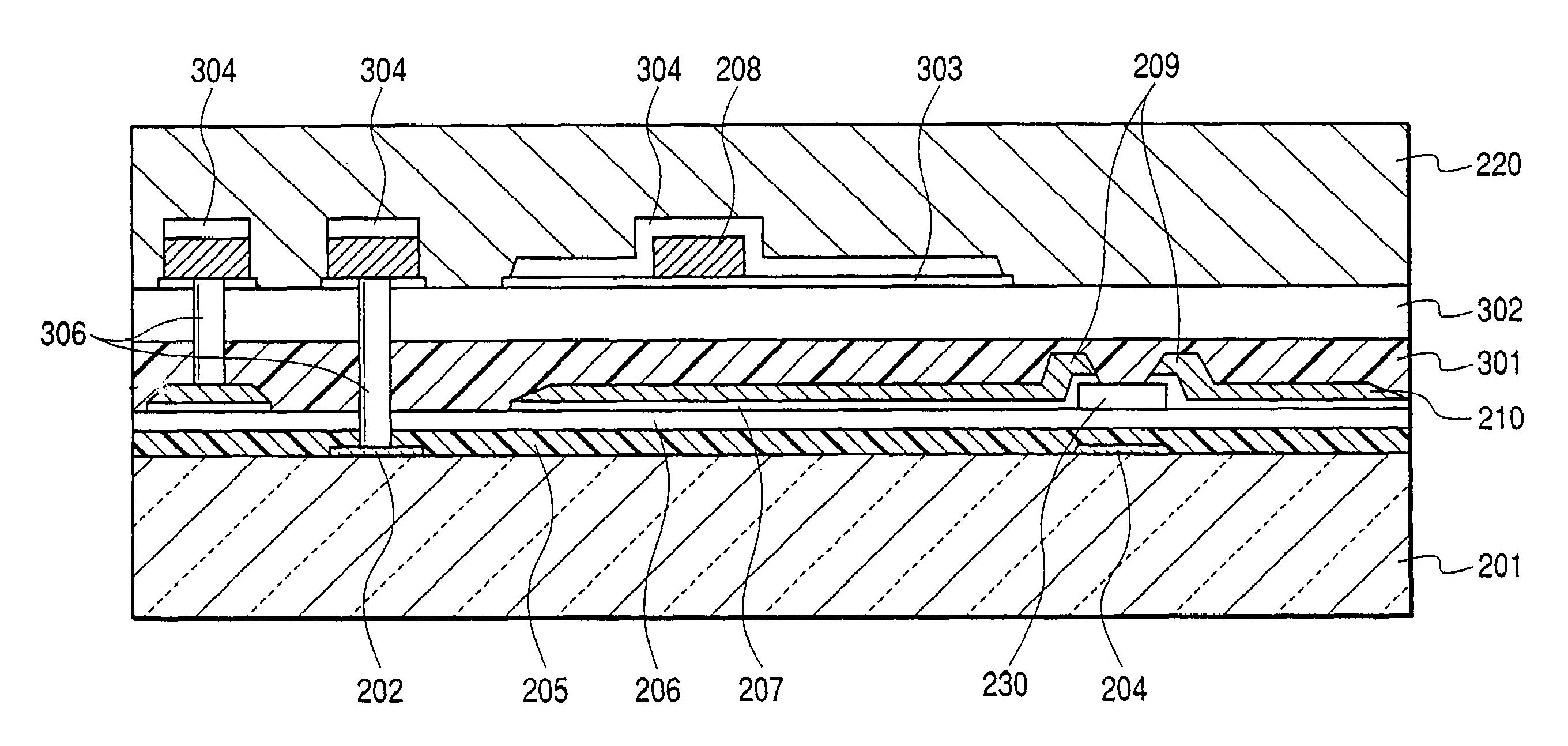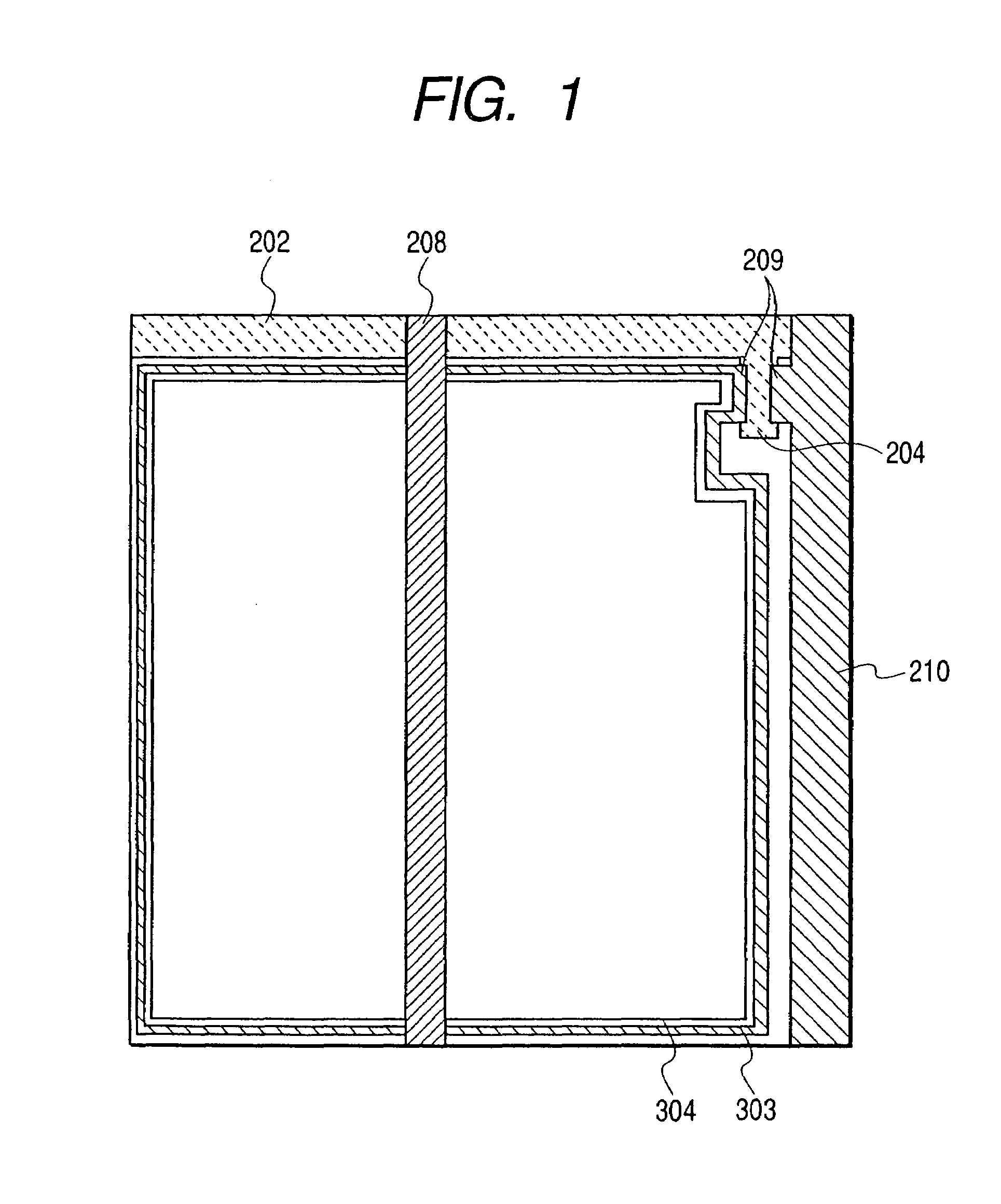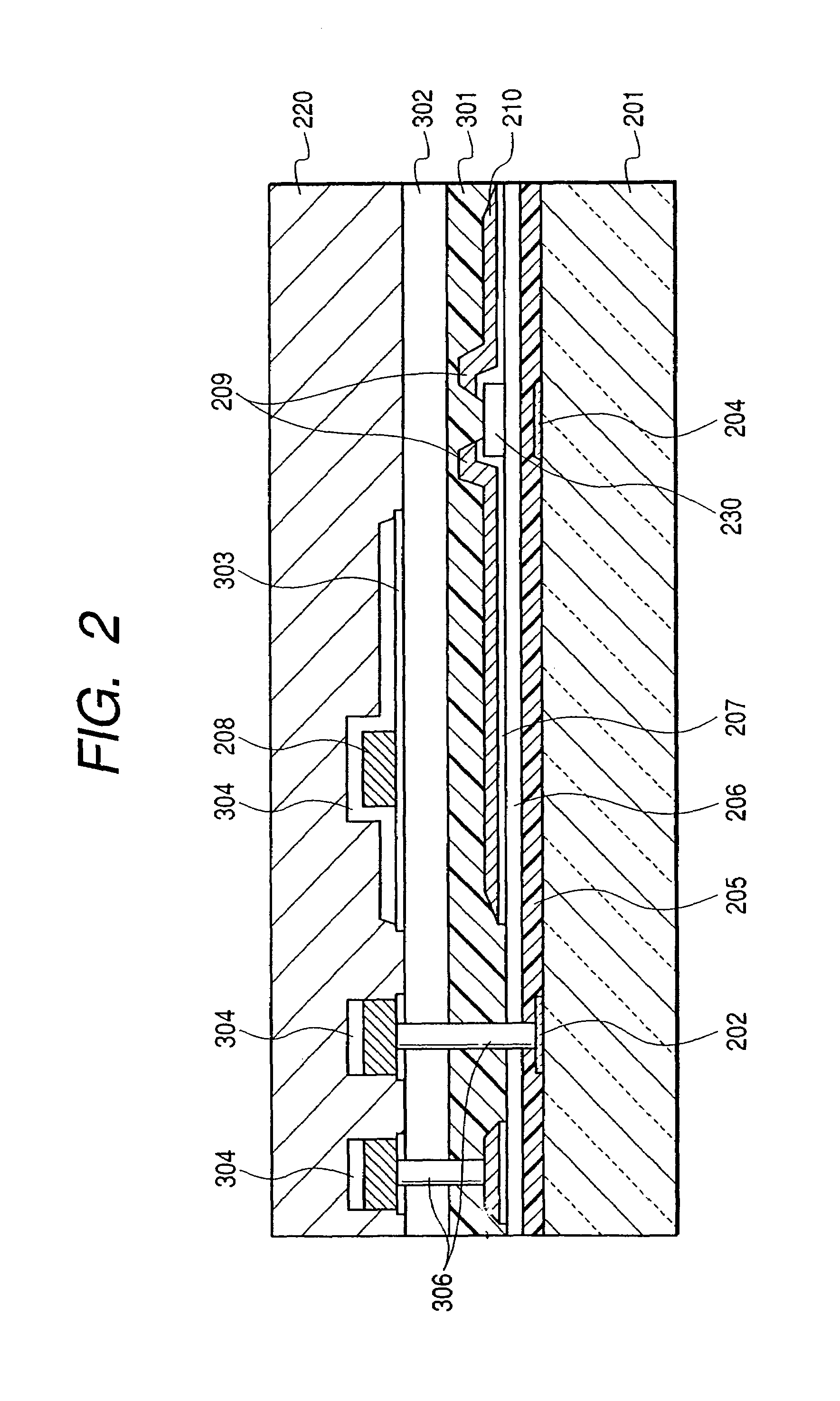Radiation detecting apparatus, manufacturing method therefor, and radiation image pickup system
a technology of radiation detection and manufacturing method, applied in the direction of optical radiation measurement, radiation controlled devices, instruments, etc., can solve the problems of increasing noise components rather than improving, affecting the sensitivity of the former, and not achieving many improvement cases, so as to achieve high manufacturing yield and increase the sensitivity
- Summary
- Abstract
- Description
- Claims
- Application Information
AI Technical Summary
Benefits of technology
Problems solved by technology
Method used
Image
Examples
embodiment 1
[0067]First, a description will be made of an X-ray detecting apparatus using an MIS type PD in accordance with Embodiment 1.
[0068]FIG. 1 is a schematic plan view showing one pixel in a case where the MIS type PD is used for a photoelectric conversion element (radiation signal conversion element). In the figure, reference numeral 202 denotes a switch TFT driving wiring; 204, a gate electrode of the switch TFT; 208, a sensor bias wiring; 210, a signal line; 209, source / drain electrodes (hereinafter, abbreviated to SD electrodes) of the switch TFT; 303, a second ohmic contact layer; and 304, a transparent electrode layer.
[0069]Also, FIG. 2 is a schematic sectional view showing the elements that are schematically arranged in one pixel of FIG. 1. For convenience in explanation of a manufacturing flow, a portion is also illustrated, in which the switch TFT driving wiring and the signal line are connected with a pad portion through a connection hole. In the figure, reference numeral 201 d...
embodiment 2
[0087]Next, the X-ray detecting apparatus using the MIS type PD according to Embodiment 2 will be described.
[0088]FIG. 7 is a schematic plan view showing one pixel in the case of using the MIS type PD for the photoelectric conversion element. In the figure, reference numeral 202 denotes the switch TFT driving wiring; 204, the gate electrode of the switch TFT; 208, the sensor bias wiring; 210, the signal line; 209, the source / drain electrodes (hereinafter, abbreviated to SD electrodes) of the switch TFT; 303, the second ohmic contact layer; 304, the transparent electrode layer; and 305, an element isolation portion.
[0089]Also, FIG. 8 is a schematic sectional view showing the elements that are schematically arranged in one pixel of FIG. 7. In the figure, reference numeral 201 denotes the glass substrate; 202, the switch TFT driving wiring; 204, the gate electrode of the switch TFT; 205, the first gate insulating film; 206, the first intrinsic a-Si film; 203, a channel stopper (etch st...
embodiment 3
[0100]FIG. 19 is a schematic plan view showing the X-ray detecting apparatus using the MIS type PD of this embodiment. FIG. 20 is a schematic sectional view taken along the line 20-20 of FIG. 19. FIG. 21 is a schematic sectional view taken along the line 21-21 of FIG. 19.
[0101]In FIGS. 19 to 21, reference numeral 1 denotes an insulating substrate; 2, a gate electrode of a switch TFT; 3, a gate wiring connected to the gate electrode 2; 4, a first insulating layer; 5, a first semiconductor layer; 6, a first ohmic contact layer; 7, source / drain electrodes of the switch TFT; 8, a signal line connected to one of the source / drain electrodes 7; 9, a first planarization layer; 10, a contact hole; 11, a pixel electrode of the MIS type PD; 12, a second insulating layer; 13, a second semiconductor layer; 14, a second ohmic contact layer; 15, a transparent electrode layer; 16, a bias wiring of the MIS type PD; 17, a second planarization layer; 18, an adhesive layer; and 19, a phosphor layer.
[01...
PUM
 Login to View More
Login to View More Abstract
Description
Claims
Application Information
 Login to View More
Login to View More - R&D
- Intellectual Property
- Life Sciences
- Materials
- Tech Scout
- Unparalleled Data Quality
- Higher Quality Content
- 60% Fewer Hallucinations
Browse by: Latest US Patents, China's latest patents, Technical Efficacy Thesaurus, Application Domain, Technology Topic, Popular Technical Reports.
© 2025 PatSnap. All rights reserved.Legal|Privacy policy|Modern Slavery Act Transparency Statement|Sitemap|About US| Contact US: help@patsnap.com



